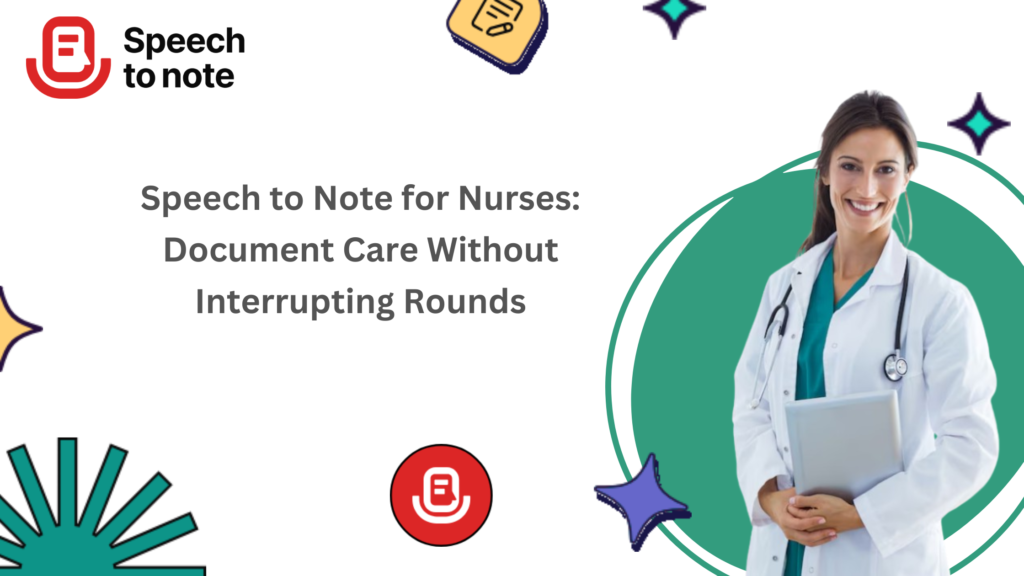If you’re a nurse, you already know the routine. Morning rounds turn into mid‑day charting, mid‑day charting bleeds into paperwork at the end of your shift, and somewhere in between, you’re trying to actually care for patients. The real headache isn’t the care itself—it’s keeping track of it all without falling behind.
What if documentation didn’t pull you out of the moment? What if you could chart while you walked, without stopping at a computer terminal every half hour? That’s where a speech to text tool changes the game.
The Problem Isn’t Time—It’s Interruption
Every nurse I know moves fast. You’re already working ten steps ahead: assessing vitals, catching medication schedules, updating doctors, calming families. What breaks your rhythm is the constant need to pause and type.
Paper notes? They get crumpled or lost in your pocket. Laptop carts? Half the time they’re missing or stuck charging in a hallway. The truth is, documentation steals your focus—not because it takes hours, but because it forces you to stop what you’re doing over and over again.
Turning Your Voice Into Instant Notes
Here’s the thing: you’re already talking your way through rounds. You’re dictating instructions to techs, updating colleagues, explaining meds to patients. Why not let that same voice handle the documentation?
Apps like speech to text let you speak naturally, even mid‑stride, and your words become accurate, organized records in seconds. You don’t need to change how you work—you just need a way to capture what you’re already saying.
I’ve seen nurses use notes with voice to record wound‑care updates while walking to their next room. Instead of remembering details for later, they say them once and it’s done. Others rely on notes on speech during critical handoffs to make sure nothing slips through. Some even use a speak writer app to turn quick hallway conversations into chart‑ready text without chasing down a computer terminal afterward.
A Day in Practice
Imagine this: You’re doing early vitals on six post‑op patients. You notice one dressing is slightly damp, another patient’s pain score is climbing faster than expected, and someone else needs their antibiotic pushed sooner than planned.
Instead of scribbling in a notebook, you say:
“Room 214, dressing change at 9 a.m. Still draining slightly. Room 216, request pain reassessment in 30 minutes.”
The app logs it automatically. By the time you sit down, you already have clear, timestamped notes ready to drop into the EMR. No backtracking. No trying to remember if it was room 214 or 215 with the drainage.
Why Nurses Are Actually Using This
According to a 2023 survey, nurses spend 25% to 35% of their shift on documentation—more time than they spend with patients. That’s not sustainable. Speech‑driven note taking isn’t about doing less charting. It’s about doing it without losing your stride.
When nurses try it, they stick with it because it feels natural. You’re not juggling an app with three layers of menus. You just open it, speak, and keep moving.
Where to Try It Yourself
If you’re curious, there’s a quick demo video here showing exactly how it works in practice. The Speech to Note app is available on both platforms:
-
Download on the App Store
-
Get it on Google Play
It takes less than a minute to set up, and you’ll know within a single shift whether it fits your workflow.
The Bottom Line
Nursing isn’t about screens and keyboards—it’s about people. Every moment you spend typing is a moment you’re not at the bedside. Tools like Speech to Note let you document care as you deliver it, without slowing down.
So next time you’re hustling through rounds, try talking your chart instead of typing it. You might find that the shift feels lighter, the records are cleaner, and you’re less drained at the end of the day.



